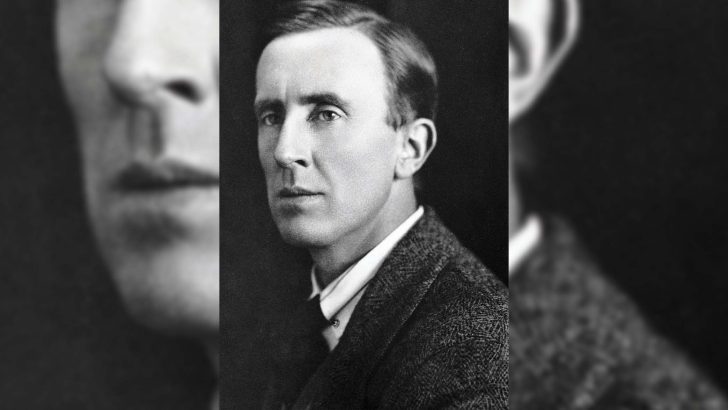Tolkien’s Modern Reading: Middle-earth Beyond the Middle Ages by Holly Ordway (Word on Fire Academic, €25.00 / £20.99)
There is a widespread belief that JRR Tolkien, the famous Catholic author of The Lord of the Rings, was against all things modern. Whether it was industrialisation, morals or literature, the narrative goes that he gave credence to nothing after Chaucer (who died in 1400).
This myth has ill-served his legacy as one of the great authors of the 20th century. For his admirers, it gives an excuse for anachronistic and at best eccentric dress and views; for his detractors, it is an excuse to disregard his work.
To that end, Dr Holly Ordway’s book Tolkien’s Modern Reading fills a gap in Tolkien scholarship and does so excellently. Dr. Holly Ordway is Fellow of Faith and Culture at the Word on Fire Institute and Visiting Professor of Apologetics at Houston Baptist University. She has written widely on the literary milieu, in which Tolkien moved, both as a scholar and a writer.
Much is known of Tolkien’s professional reading in Anglo-Saxon and Medieval literature – but before Dr Ordway, little was said about the influence of science fiction, fantasy or late Victorian fairy tales on his great books.
Enthusiast
Dr Ordway brings a Tolkien-enthusiast’s zest to the project, as well as a professional academic’s skills – she has a PhD in English literature from the University of Massachusetts Amherst. She lays out clearly the limits of the project. It is only works she knows for certain that Tolkien read or owned that are addressed, leaving as she says herself ample space for future study, while giving her project greater focus.
She goes straight to the heart of the matter in rebutting the view proposed by Tolkien’s official biographer, Humphrey Carpenter, that Prof. Tolkien was a fuddy-duddy Oxford academic. Mr Carpenter’s influence has had a baleful effect, tending to distract from Tolkien’s wide reading and engagement with the modern age.
For instance, as a trained philologist and lover of words, Tolkien took an interest in the ultimate modernist novel, Finnegans Wake by James Joyce. It was not an unquestioning interest; he enjoyed Joyce’s attention to the sound words have, less so his irreverence.
But noted Tolkien scholar Tom Shippey (author of The Road to Middle Earth) points out that “both Ulysses and The Lord of the Rings are evidently works of the 20th century, neither of them readily describable as novels, which are engaged in deep negotiation with the ancient genres of epic and romance”.
But while that shows Tolkien’s almost professional interest in modern literature, his casual reading suggests the more lasting influences on The Lord of the Rings. In particular, Dr Ordway suggests that his childhood reading and lifelong interest in children’s literature – such as the fairy tales of George MacDonald, but also the works of Beatrix Potter.
Equally, more distinctive stylists such as William Morris also helped him, Dr Ordway argues, to find the mixed prose-and-verse form of one of his earliest tales. And then of course there’s his love of Agatha Christie, his love-hate for Dorothy Sayers’ works, his delight in all fictional worlds that implied a thorough and plausible sub-creation, including science fiction and modern fantasy.
Tolkien himself had a much subtler view on how other works influenced his mind, according to Dr Ordway, than either his supporters or detractors suggest. Stories such as The Lord of the Rings, Tolkien said, “grow like a seed in the dark out of the leaf-mould of the mind: out of all that has been seen or thought or read, that has long ago been forgotten, descending into the deeps”.
His reading was “available for use by his imagination in ways that went beyond the conscious or the deliberate”, Dr Ordway writes, and in proving this to be the case she has done Tolkien’s multitude of admirers a great service.


 Ruadhán Jones
Ruadhán Jones
